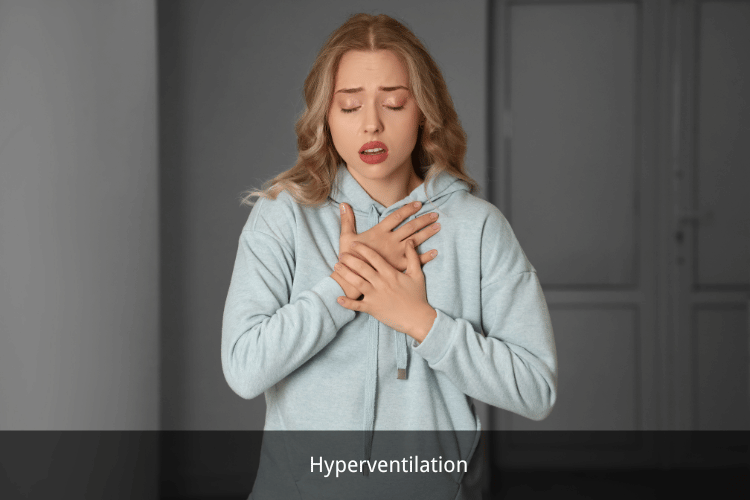
Hyperventilation, often triggered by stress or certain medical conditions, disrupts the body's balance of oxygen and carbon dioxide, leading to symptoms such as dizziness, chest tightness, and tingling sensations. This article explores the causes, symptoms, and management strategies for hyperventilation, including techniques to regain control and improve breathing patterns.
Understanding Hyperventilation
What is Hyperventilation?
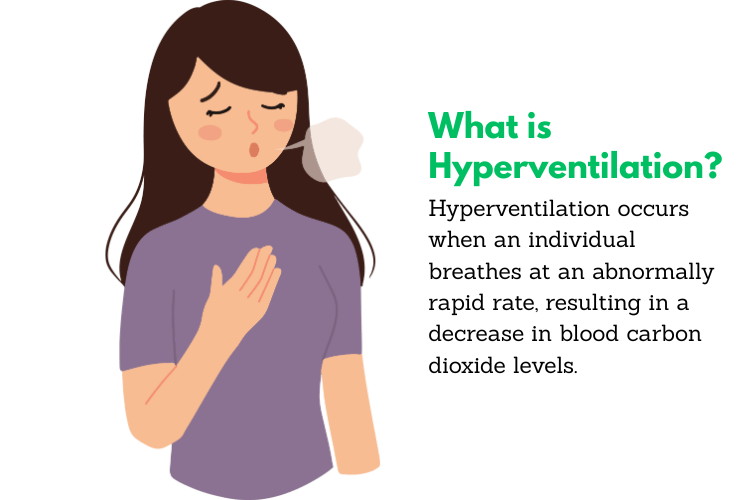 Hyperventilation occurs when an individual breathes at an abnormally rapid rate, resulting in a decrease in blood carbon dioxide levels. This condition disrupts the balance of oxygen and carbon dioxide, which can result in symptoms such as dizziness, lightheadedness, shortness of breath, and tingling sensations in the hands and feet. Hyperventilation is often triggered by stress, anxiety, or panic attacks, but it can also occur due to medical conditions such as asthma, lung infections, or metabolic imbalances.
When a person hyperventilates, they exhale more carbon dioxide than their body produces, causing a state known as respiratory alkalosis. This imbalance can lead to constriction of blood vessels, particularly those supplying the brain, which contributes to the sensation of dizziness or faintness. While hyperventilation is usually not life-threatening, it can be distressing and may require intervention to restore standard breathing patterns.
Hyperventilation occurs when an individual breathes at an abnormally rapid rate, resulting in a decrease in blood carbon dioxide levels. This condition disrupts the balance of oxygen and carbon dioxide, which can result in symptoms such as dizziness, lightheadedness, shortness of breath, and tingling sensations in the hands and feet. Hyperventilation is often triggered by stress, anxiety, or panic attacks, but it can also occur due to medical conditions such as asthma, lung infections, or metabolic imbalances.
When a person hyperventilates, they exhale more carbon dioxide than their body produces, causing a state known as respiratory alkalosis. This imbalance can lead to constriction of blood vessels, particularly those supplying the brain, which contributes to the sensation of dizziness or faintness. While hyperventilation is usually not life-threatening, it can be distressing and may require intervention to restore standard breathing patterns.
Types of Hyperventilation
Hyperventilation can be categorized into different types based on its underlying cause and duration. Understanding these types can help in identifying the appropriate treatment or management strategy:- Acute Hyperventilation: This type occurs suddenly and is often associated with a specific trigger, such as a panic attack, intense stress, or physical exertion. Symptoms typically resolve once the trigger is addressed or the individual calms down.
- Chronic Hyperventilation: Chronic hyperventilation is a long-term condition where an individual consistently breathes too rapidly or deeply, even during rest. This type is often linked to underlying medical conditions, such as chronic anxiety, asthma, or chronic obstructive pulmonary disease (COPD). It may lead to persistent symptoms like fatigue, chest discomfort, and difficulty concentrating.
- Situational Hyperventilation: This type occurs in response to specific situations, such as high altitudes, extreme heat, or exposure to certain chemicals. Situational hyperventilation is usually temporary and resolves once the individual is removed from the triggering environment.
- Compensatory Hyperventilation: In some cases, hyperventilation is the body’s response to a medical condition, such as metabolic acidosis or low oxygen levels due to lung disease. In these situations, the rapid breathing is an attempt to correct the underlying imbalance.
Hyperventilation Syndrome Explained
Hyperventilation Syndrome (HVS) is a condition characterized by frequent episodes of hyperventilation that are not caused by an underlying medical issue. Instead, HVS is often linked to psychological factors, such as anxiety, stress, or emotional distress. Individuals with HVS may experience a range of symptoms, including chest pain, dizziness, palpitations, and a sense of impending doom, which can mimic the symptoms of a heart attack or other serious conditions. One of the key features of HVS is the presence of a feedback loop, where the symptoms of hyperventilation (e.g., dizziness or chest tightness) increase anxiety, which in turn exacerbates the hyperventilation. This cycle can make the condition difficult to manage without proper intervention. Diagnosis of HVS typically involves ruling out other medical causes of hyperventilation through physical exams, blood tests, and imaging studies. Treatment for Hyperventilation Syndrome often focuses on breaking the cycle of hyperventilation and anxiety. Breathing retraining exercises, such as diaphragmatic breathing or pursed-lip breathing, can help individuals regain control over their breathing patterns. Cognitive-behavioral therapy (CBT) is also commonly used to address the underlying psychological triggers and teach coping strategies for managing stress and anxiety. In some cases, relaxation techniques, such as mindfulness meditation or progressive muscle relaxation, may be recommended to reduce the frequency and severity of hyperventilation episodes.Symptoms and Causes of Hyperventilation
Common Symptoms of Hyperventilation
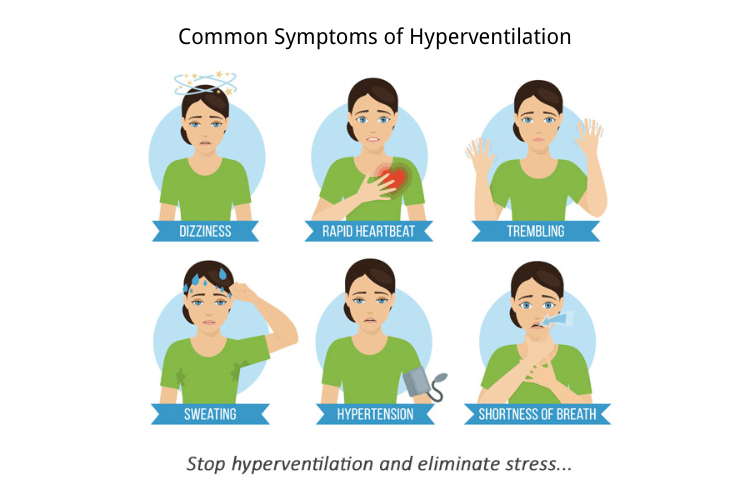 Hyperventilation can manifest through a variety of symptoms, many of which are related to the body's imbalance of oxygen and carbon dioxide. These symptoms can range from mild to severe, depending on the duration and intensity of the episode. One of the most common signs is rapid or shallow breathing, which may be accompanied by a feeling of breathlessness or an inability to take a deep breath. This can create a sense of panic, further exacerbating the condition.
Other physical symptoms include dizziness, lightheadedness, and tingling sensations in the hands, feet, or around the mouth. These sensations occur due to reduced carbon dioxide levels, which cause blood vessels to constrict and limit blood flow to particular areas. Chest pain or tightness is another frequent complaint, often mistaken for a heart-related issue. Additionally, individuals may experience dry mouth, sweating, nausea, or blurred vision. In severe cases, hyperventilation can lead to fainting, as the brain receives less oxygenated blood.
It’s important to note that the symptoms of hyperventilation can mimic those of other medical conditions, such as asthma, heart attacks, or anxiety disorders. Therefore, proper evaluation by a healthcare professional is essential to determine the underlying cause and rule out more serious issues.
Hyperventilation can manifest through a variety of symptoms, many of which are related to the body's imbalance of oxygen and carbon dioxide. These symptoms can range from mild to severe, depending on the duration and intensity of the episode. One of the most common signs is rapid or shallow breathing, which may be accompanied by a feeling of breathlessness or an inability to take a deep breath. This can create a sense of panic, further exacerbating the condition.
Other physical symptoms include dizziness, lightheadedness, and tingling sensations in the hands, feet, or around the mouth. These sensations occur due to reduced carbon dioxide levels, which cause blood vessels to constrict and limit blood flow to particular areas. Chest pain or tightness is another frequent complaint, often mistaken for a heart-related issue. Additionally, individuals may experience dry mouth, sweating, nausea, or blurred vision. In severe cases, hyperventilation can lead to fainting, as the brain receives less oxygenated blood.
It’s important to note that the symptoms of hyperventilation can mimic those of other medical conditions, such as asthma, heart attacks, or anxiety disorders. Therefore, proper evaluation by a healthcare professional is essential to determine the underlying cause and rule out more serious issues.
Identifying the Causes of Hyperventilation
Hyperventilation can be triggered by a wide range of factors, both physical and psychological. One of the most common causes is anxiety or panic attacks, where heightened emotional states lead to rapid breathing. Stressful situations, such as public speaking, exams, or traumatic events, can also provoke hyperventilation. In these cases, the body’s fight-or-flight response is activated, causing an increase in breathing rate. Medical conditions can also contribute to hyperventilation. Respiratory disorders, such as asthma, chronic obstructive pulmonary disease (COPD), or pneumonia, may cause individuals to breathe faster in an attempt to compensate for reduced oxygen levels. Similarly, metabolic conditions like diabetic ketoacidosis or sepsis can lead to hyperventilation as the body tries to correct imbalances in blood chemistry. Other potential causes include high altitudes, where oxygen levels are lower, or physical exertion during intense exercise. Certain medications, such as stimulants or drugs that affect the central nervous system, may also induce hyperventilation as a side effect. Additionally, pain, fever, or even hormonal changes, such as those experienced during pregnancy, can contribute to episodes of rapid breathing. Identifying the specific cause of hyperventilation is crucial for determining the most effective treatment or management strategy.Psychological and Physical Triggers
Hyperventilation is often the result of a combination of psychological and physical triggers, which can vary from person to person. Psychological triggers are typically linked to emotional states, such as fear, stress, or anxiety. For example, individuals with generalized anxiety disorder or post-traumatic stress disorder (PTSD) may be more prone to hyperventilation episodes. These triggers create a feedback loop, where the physical symptoms of hyperventilation increase anxiety, further worsening the condition. Physical triggers, on the other hand, are related to the body’s physiological responses. Intense physical activity, such as running or heavy lifting, can lead to hyperventilation, especially in individuals who are not accustomed to such exertion. Environmental factors, such as exposure to high altitudes or extreme heat, can also act as physical triggers. Additionally, underlying health conditions, such as lung infections or heart problems, may predispose individuals to hyperventilation. Understanding the interplay between psychological and physical triggers is essential for managing hyperventilation effectively. For instance, addressing anxiety through therapy or relaxation techniques can help reduce the frequency of episodes, while treating underlying medical conditions can prevent physical triggers. By identifying and addressing these triggers, individuals can regain control over their breathing and improve their overall quality of life.Management and Treatment of Hyperventilation
Treatment Options for Hyperventilation
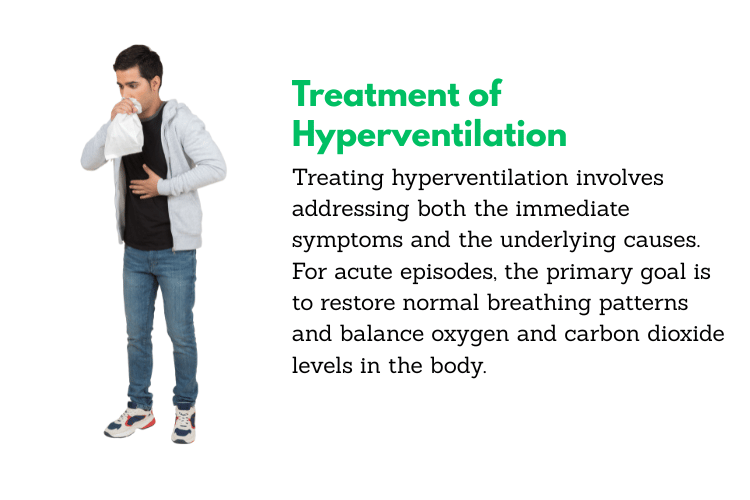 Treating hyperventilation involves addressing both the immediate symptoms and the underlying causes. For acute episodes, the primary goal is to restore normal breathing patterns and balance oxygen and carbon dioxide levels in the body. One of the most common approaches is to encourage the individual to slow their breathing by taking deep, controlled breaths. This can be achieved through guided breathing exercises or by having the person breathe into a paper bag, which helps retain carbon dioxide and correct the imbalance. However, the paper bag method should only be used under medical supervision, as it may not be appropriate for all cases.
In cases where hyperventilation is caused by an underlying medical condition, such as asthma or a metabolic disorder, treating the root cause is essential. For example, individuals with asthma may require bronchodilators to open their airways, while those with metabolic imbalances may need specific medications or dietary adjustments. If hyperventilation is linked to anxiety or panic disorders, therapy and medication may be recommended to address the psychological triggers.
For chronic hyperventilation or Hyperventilation Syndrome (HVS), a combination of breathing retraining, stress management, and lifestyle changes is often the most effective approach. Healthcare providers may also recommend biofeedback therapy, which uses sensors to monitor physiological responses and teach individuals how to control their breathing and heart rate.
Treating hyperventilation involves addressing both the immediate symptoms and the underlying causes. For acute episodes, the primary goal is to restore normal breathing patterns and balance oxygen and carbon dioxide levels in the body. One of the most common approaches is to encourage the individual to slow their breathing by taking deep, controlled breaths. This can be achieved through guided breathing exercises or by having the person breathe into a paper bag, which helps retain carbon dioxide and correct the imbalance. However, the paper bag method should only be used under medical supervision, as it may not be appropriate for all cases.
In cases where hyperventilation is caused by an underlying medical condition, such as asthma or a metabolic disorder, treating the root cause is essential. For example, individuals with asthma may require bronchodilators to open their airways, while those with metabolic imbalances may need specific medications or dietary adjustments. If hyperventilation is linked to anxiety or panic disorders, therapy and medication may be recommended to address the psychological triggers.
For chronic hyperventilation or Hyperventilation Syndrome (HVS), a combination of breathing retraining, stress management, and lifestyle changes is often the most effective approach. Healthcare providers may also recommend biofeedback therapy, which uses sensors to monitor physiological responses and teach individuals how to control their breathing and heart rate.
Techniques for Treating Hyperventilation
Several techniques can be used to manage and treat hyperventilation, particularly during acute episodes. These methods focus on calming the individual and restoring normal breathing patterns:- Diaphragmatic Breathing: This technique involves breathing deeply into the diaphragm rather than the chest. To practice, place one hand on your chest and the other on your abdomen. Inhale slowly through your nose, ensuring that your abdomen rises while your chest remains still. Exhale gently through your mouth. This method helps regulate breathing and reduce symptoms.
- Pursed-Lip Breathing: Pursed-lip breathing is another effective technique for slowing down rapid breathing. Inhale deeply through your nose, then exhale slowly through pursed lips, as if you were blowing out a candle. This technique helps retain carbon dioxide and promotes relaxation.
- Breathing into Cupped Hands: For individuals without access to a paper bag, breathing into cupped hands can achieve a similar effect. This method helps trap exhaled carbon dioxide, allowing it to be re-inhaled and restoring the balance of gases in the blood.
- Progressive Muscle Relaxation: Hyperventilation often occurs alongside tension and anxiety. Progressive muscle relaxation involves tensing and then relaxing each muscle group in the body, starting from the toes and working upward. This technique can help reduce overall stress and improve breathing.
- Mindfulness and Meditation: Mindfulness practices, such as meditation or guided imagery, can help individuals focus on the present moment and reduce anxiety. These techniques are particularly useful for managing hyperventilation caused by psychological triggers.
Long-term Management Strategies
Long-term management of hyperventilation focuses on preventing future episodes and addressing the underlying causes. For individuals with anxiety or panic disorders, cognitive-behavioral therapy (CBT) is a highly effective treatment. CBT helps individuals identify and challenge negative thought patterns that contribute to hyperventilation, replacing them with healthier coping mechanisms. In some cases, medication such as anti-anxiety drugs or antidepressants may be prescribed to manage symptoms. Lifestyle changes also play a crucial role in long-term management. Regular physical activity, such as yoga, swimming, or walking, can improve overall respiratory function and reduce stress levels. Maintaining a balanced diet and staying hydrated can also support optimal metabolic and respiratory health. Additionally, avoiding stimulants like caffeine and nicotine can help prevent hyperventilation episodes, as these substances can increase heart rate and breathing. For individuals with chronic hyperventilation, breathing retraining programs can be particularly beneficial. These programs teach participants how to adopt healthier breathing patterns, even during stressful situations. Biofeedback therapy may also be used to monitor and improve physiological responses, such as heart rate and breathing rate. Finally, creating a supportive environment is essential for managing hyperventilation. Educating family members, friends, and coworkers about the condition can help them provide assistance during episodes and reduce the stigma associated with hyperventilation. By combining these strategies, individuals can achieve better control over their symptoms and improve their overall quality of life.、Frequently Asked Questions
Q: What is hyperventilation?
A: Hyperventilation, also referred to as overbreathing, is a condition where an individual breathes faster or deeper than necessary. This abnormal breathing pattern reduces carbon dioxide levels in the blood, leading to symptoms such as dizziness, chest tightness, tingling sensations, and a feeling of breathlessness. It is often associated with anxiety or stress but can also result from medical conditions.
Q: What causes hyperventilation?
A: Hyperventilation can have various causes, but it is frequently linked to anxiety, panic disorders, or emotional distress. Stressful situations, such as public speaking or traumatic events, can trigger episodes. Other causes include medical conditions like asthma, lung infections, or metabolic imbalances, as well as environmental factors like high altitudes or extreme heat.
Q: What are the symptoms of hyperventilation?
A: Common symptoms of hyperventilation include rapid or shallow breathing, chest pain, dizziness, lightheadedness, and tingling in the hands, feet, or around the mouth. These symptoms can be distressing and may mimic those of more serious conditions, such as a heart attack, which often leads individuals to seek immediate medical attention.
Q: How can I manage hyperventilation episodes?
A: Managing hyperventilation episodes involves techniques to slow your breathing and restore balance. Breathing exercises, such as diaphragmatic breathing or pursed-lip breathing, can help regulate your breathing and increase carbon dioxide levels. Additionally, practicing relaxation techniques like mindfulness or progressive muscle relaxation can reduce anxiety and prevent future episodes.
Q: What is the treatment for hyperventilation?
A: Treatment for hyperventilation focuses on addressing both the immediate symptoms and the underlying causes. For acute episodes, breathing retraining exercises can help restore normal breathing patterns. Long-term treatment often involves cognitive-behavioral therapy (CBT) to manage anxiety or panic disorders. In some cases, medications such as anti-anxiety drugs may be prescribed to complement therapy.
Q: Can deep breathing help with hyperventilation?
A: Yes, deep breathing exercises are highly effective in managing hyperventilation. Techniques like diaphragmatic breathing encourage slow, controlled breaths, which help stabilize carbon dioxide levels and alleviate symptoms. Regular practice of deep breathing can also reduce stress and improve overall respiratory health.
Q: Is hyperventilation a medical emergency?
A: While hyperventilation can feel alarming and mimic symptoms of a medical emergency, it is usually not life-threatening. However, if symptoms are severe, persistent, or accompanied by chest pain or confusion, it is important to seek medical attention to rule out other serious conditions and receive appropriate care.
Q: How can I breathe out slowly during hyperventilation?
A: To breathe out slowly during hyperventilation, try pursed-lip breathing. Inhale deeply through your nose, then exhale slowly through pursed lips, as if you are blowing out a candle. This technique helps regulate your breathing, promotes relaxation, and reduces the physical symptoms of hyperventilation.
Conclusion
Understanding hyperventilation and its triggers is key to managing this condition effectively. Whether caused by anxiety or underlying health issues, techniques like diaphragmatic breathing and stress management can help restore balance and prevent future episodes. With the right approach, individuals can regain control and improve their quality of life.





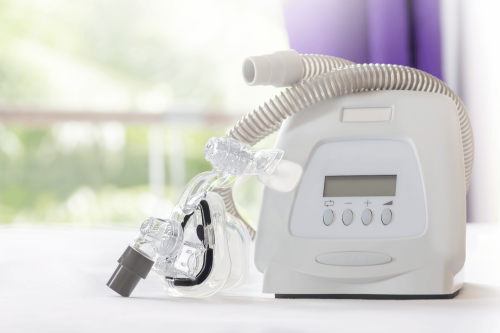

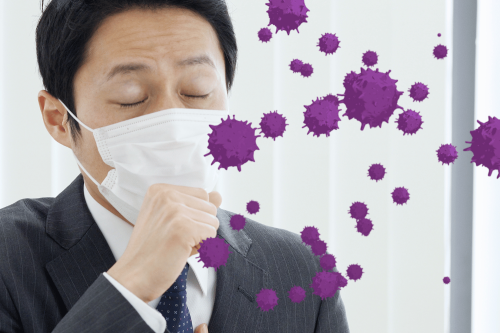
 Login with Google
Login with Google Login with Facebook
Login with Facebook